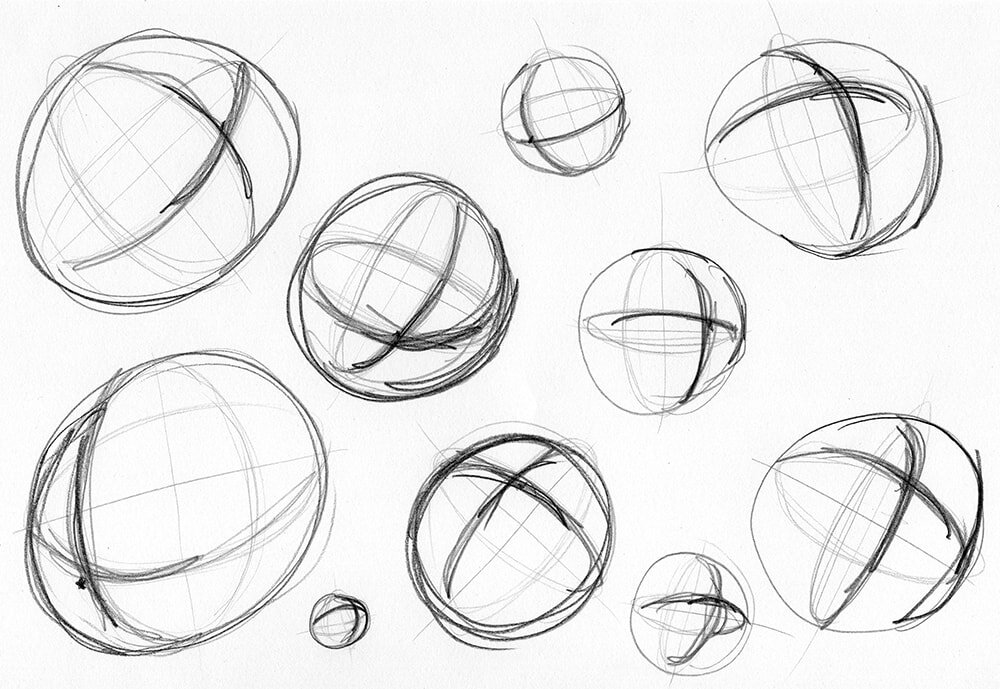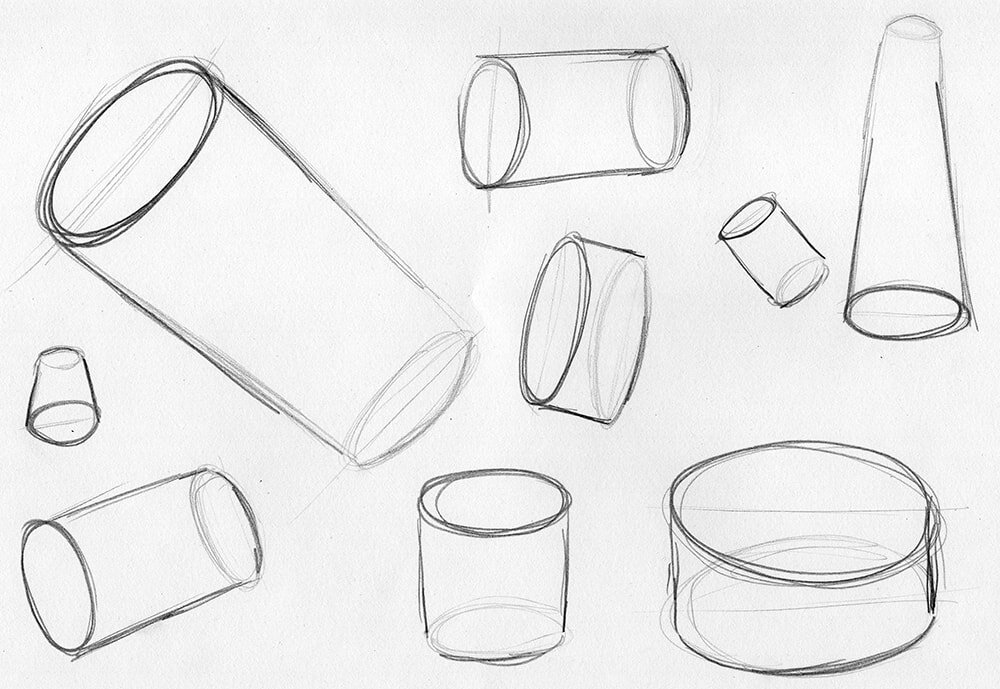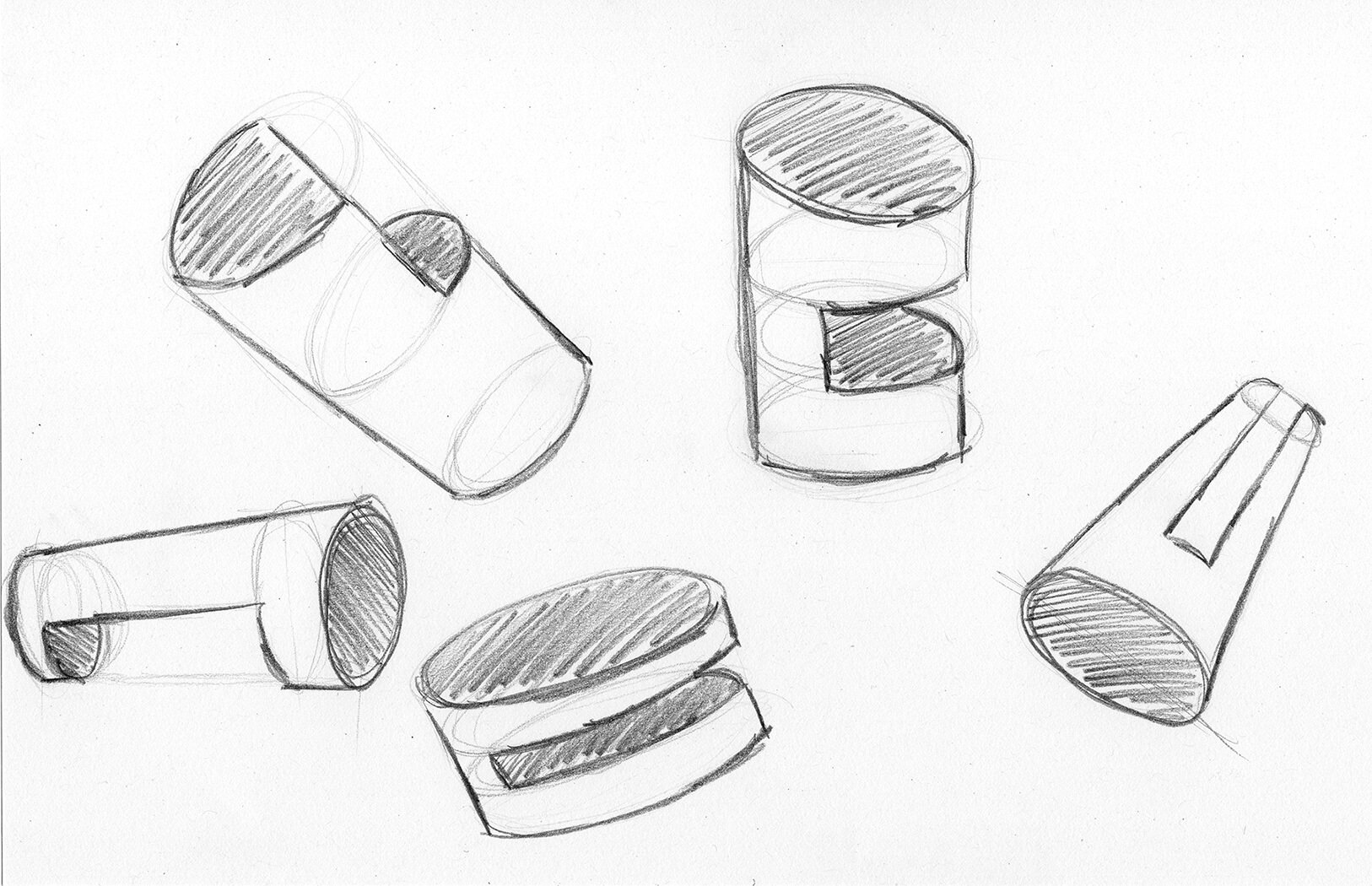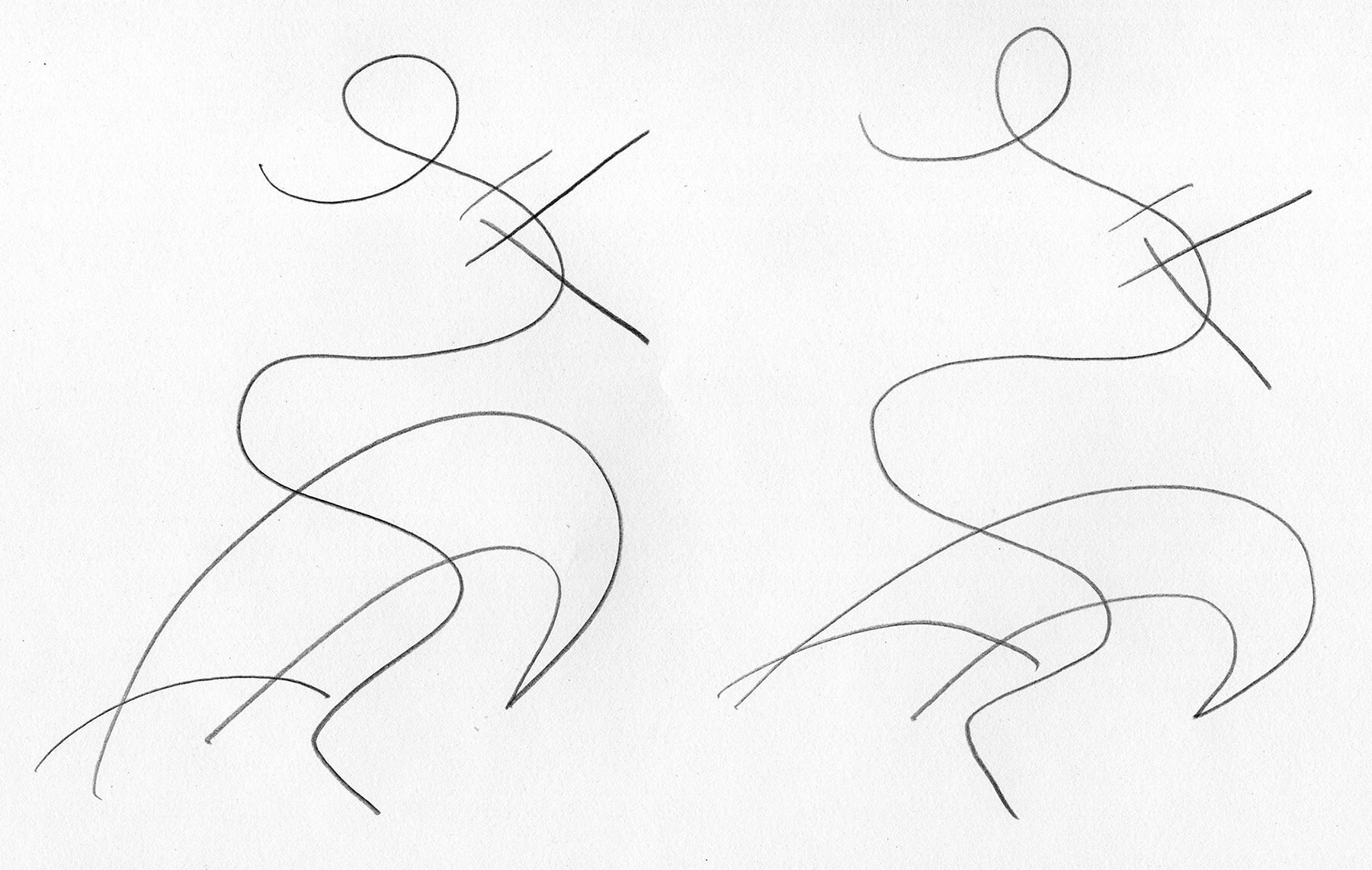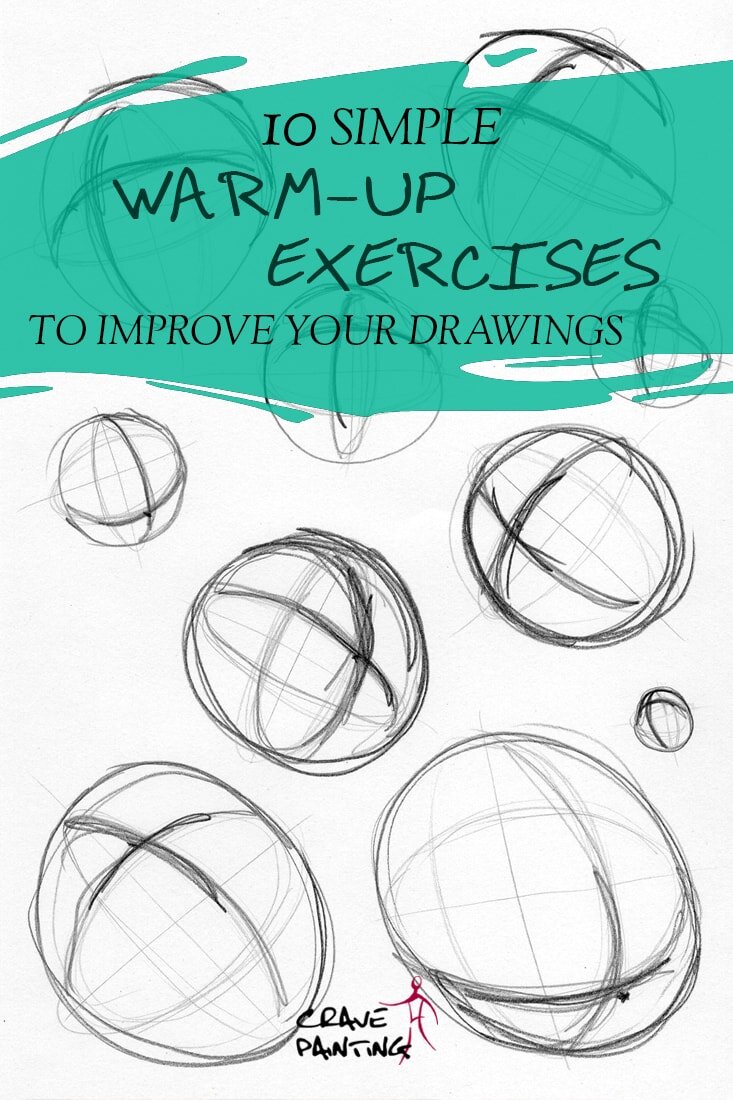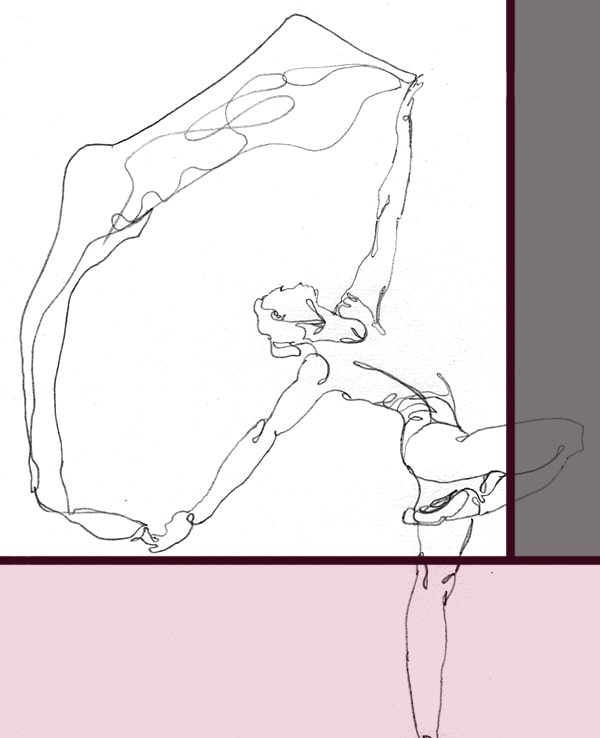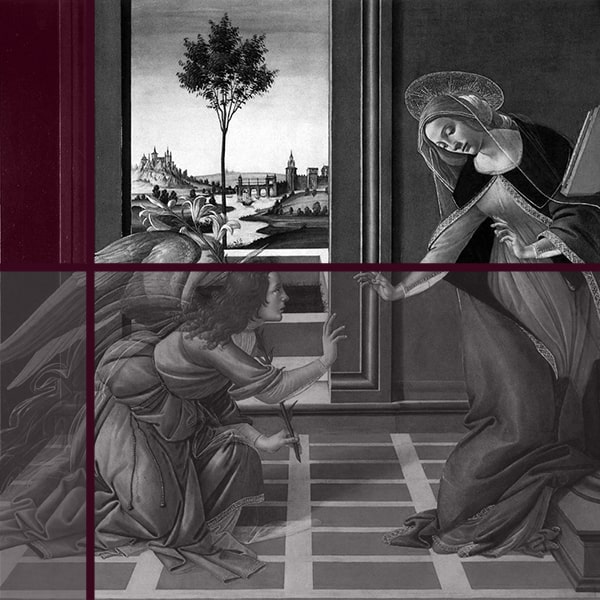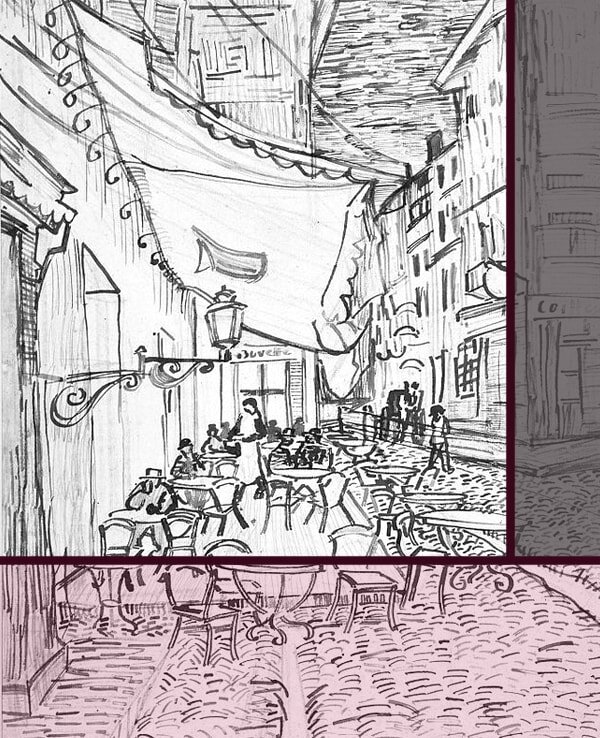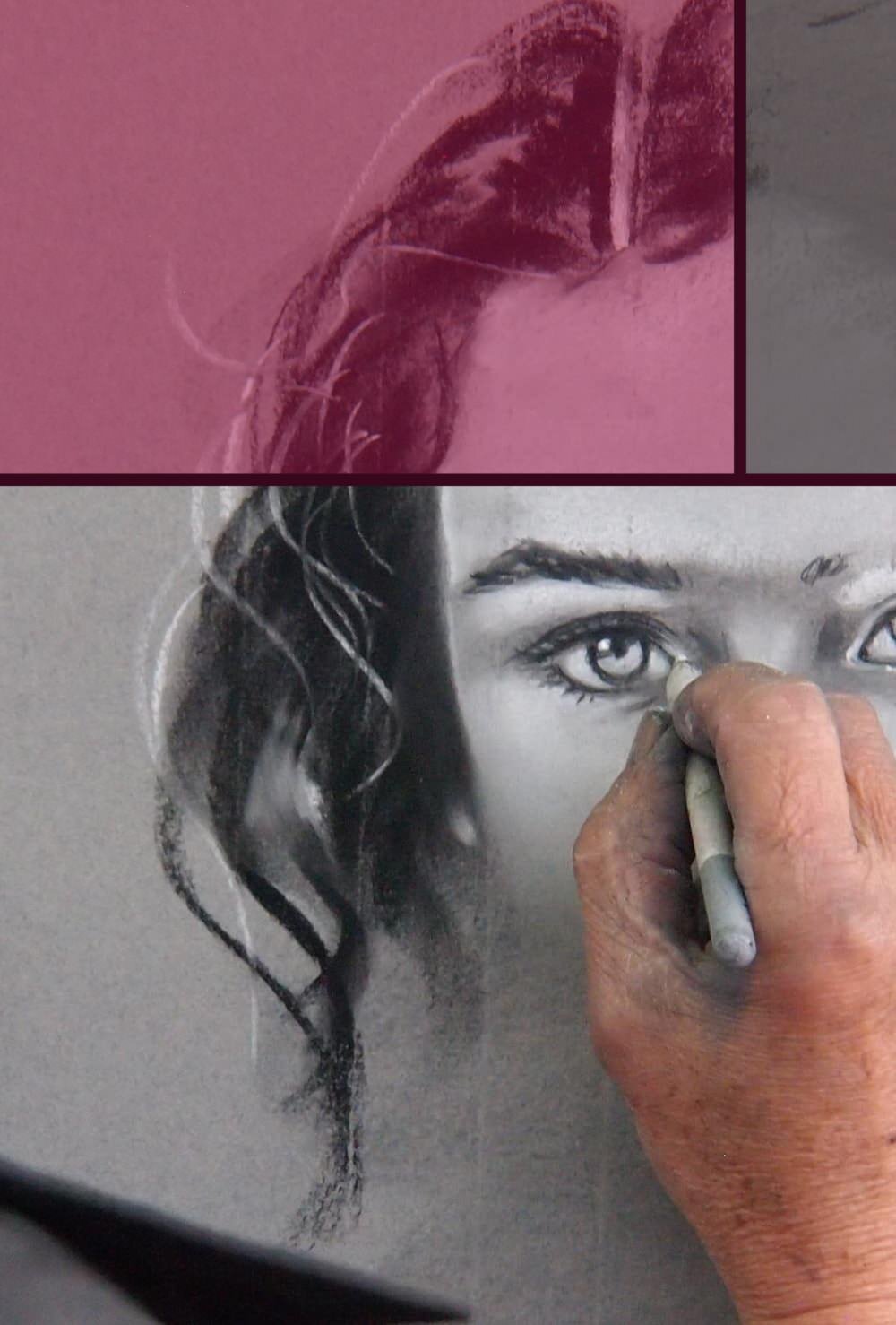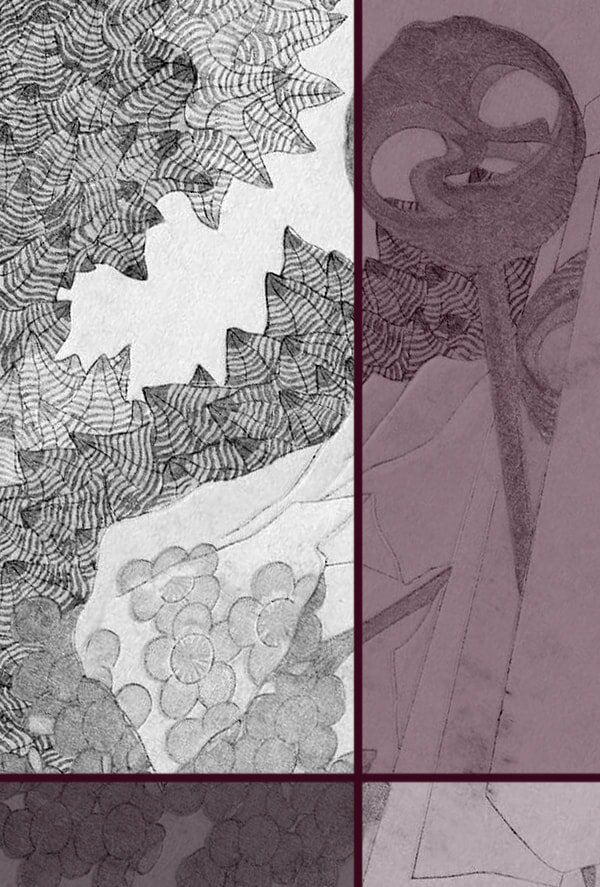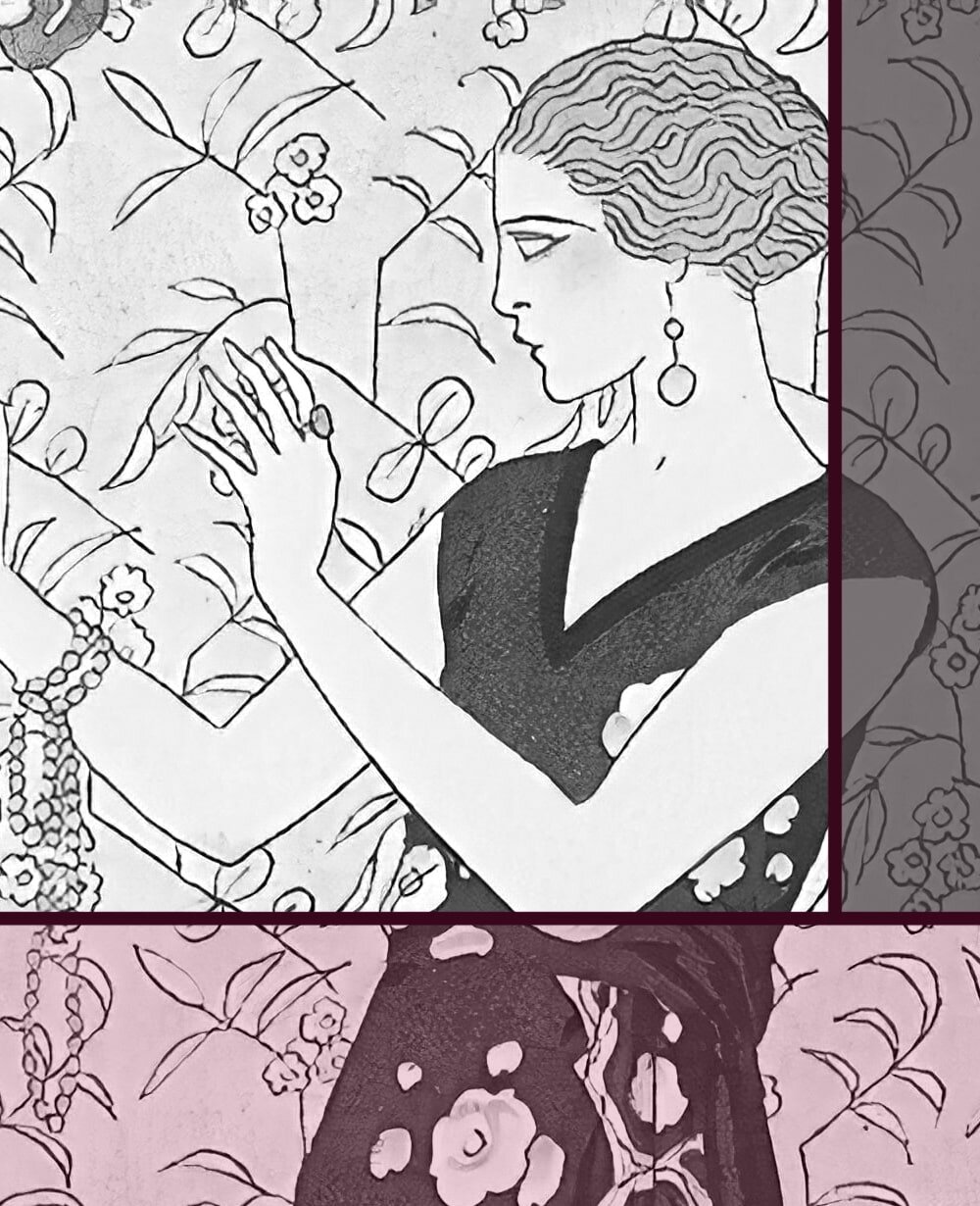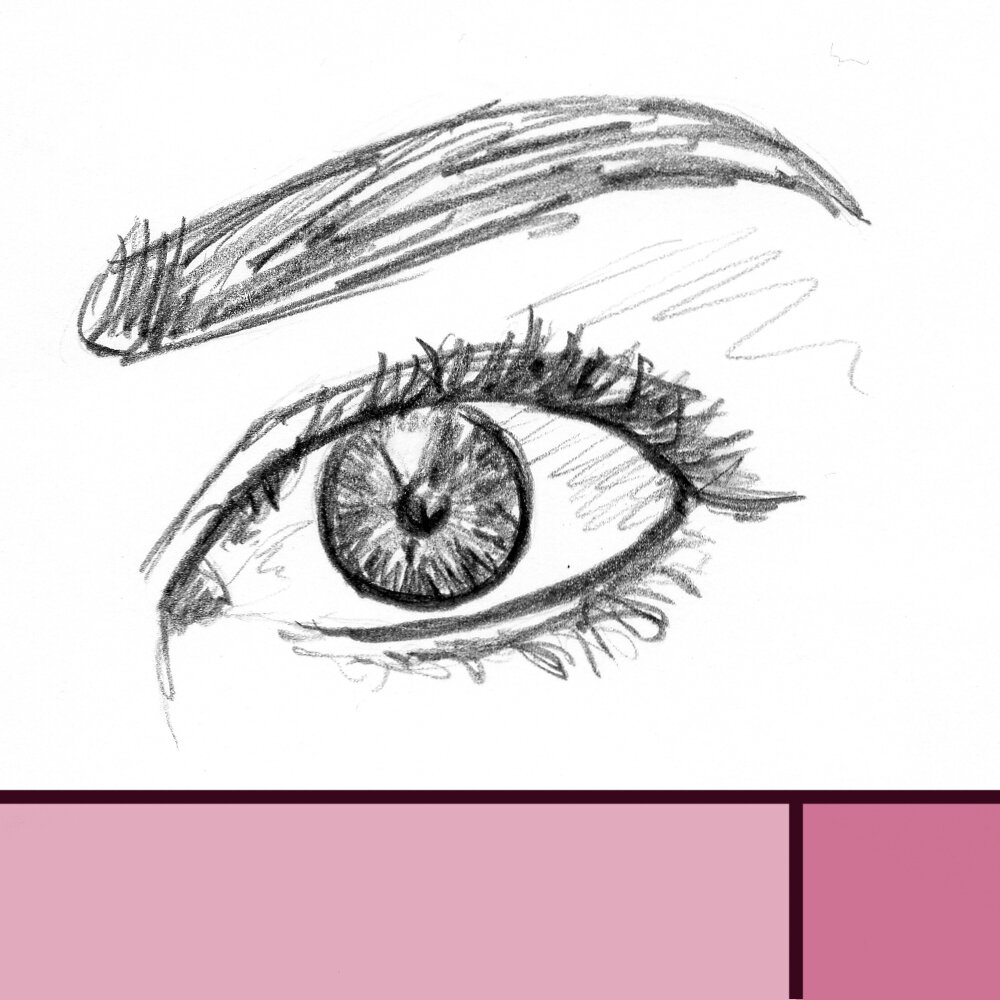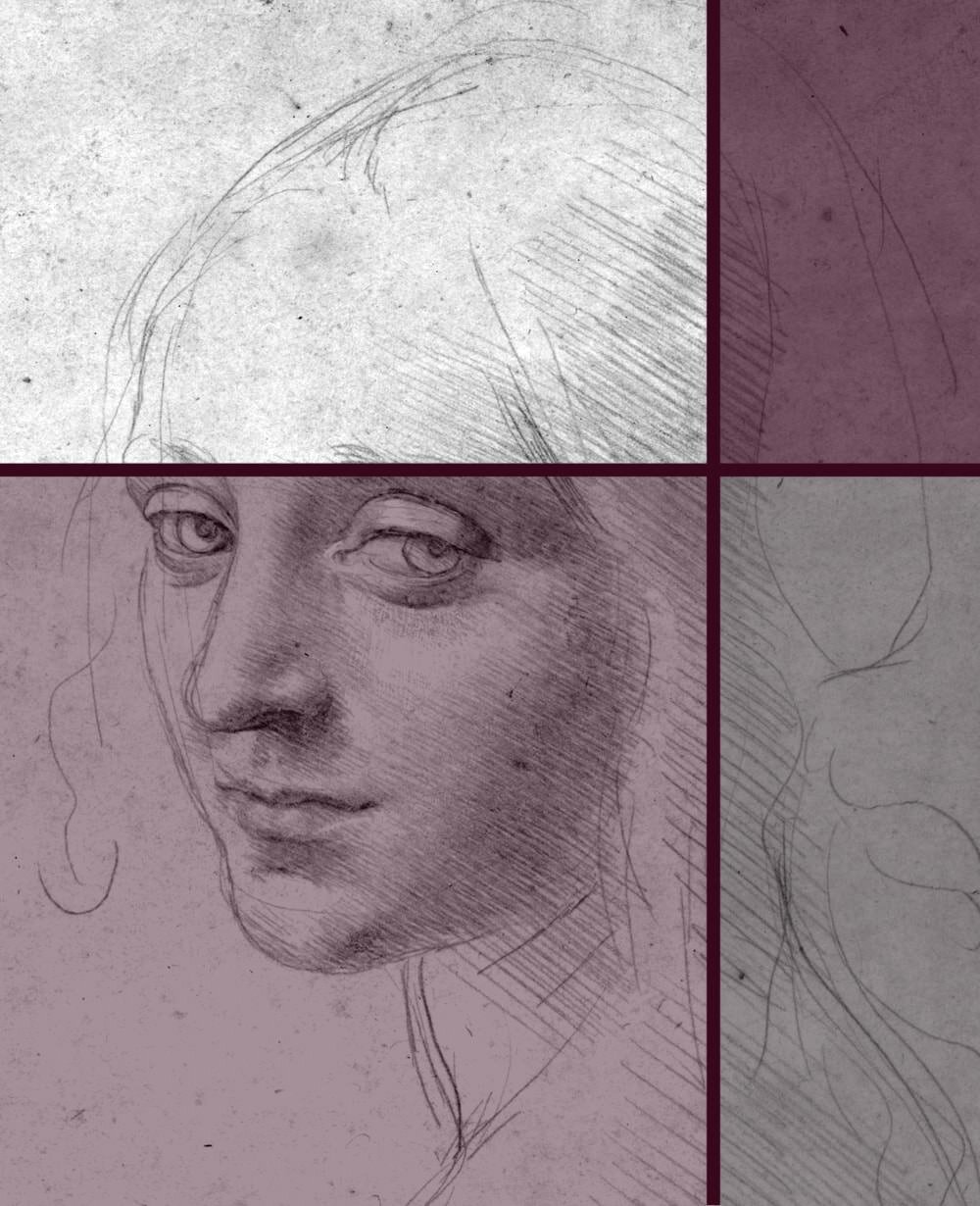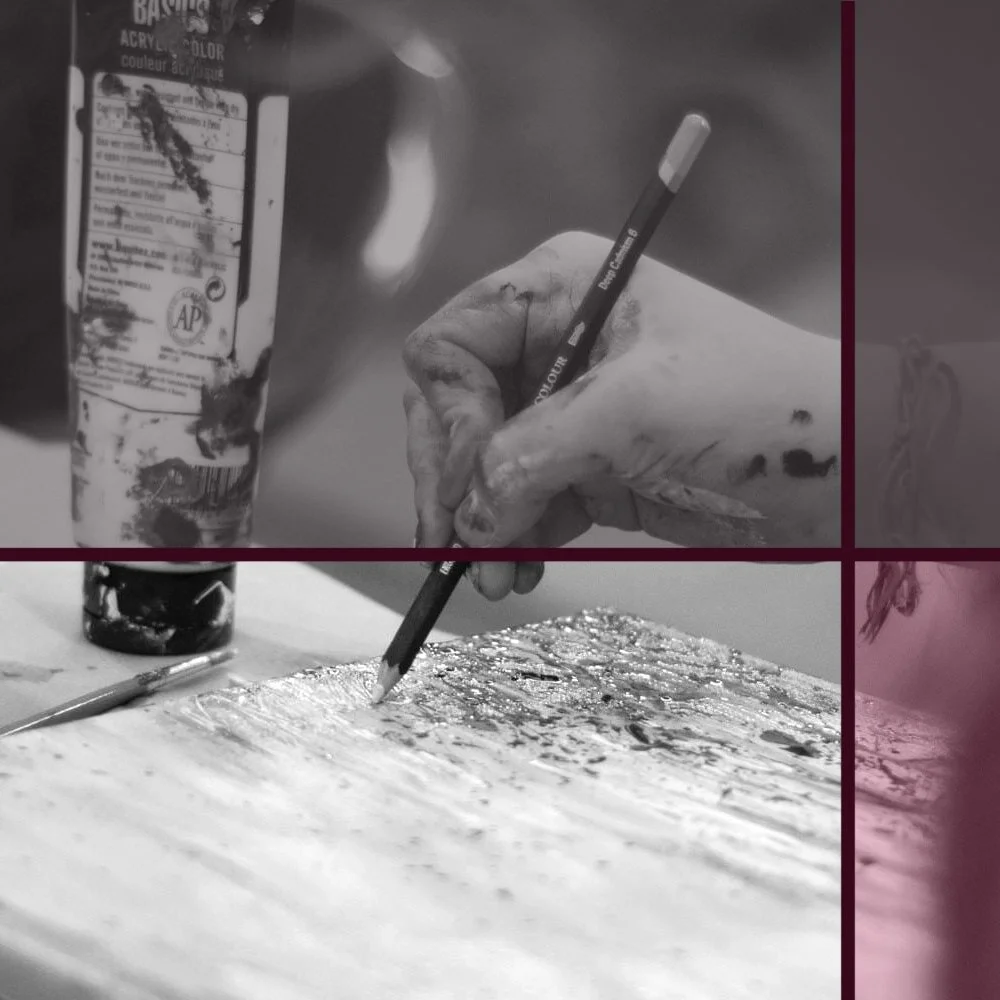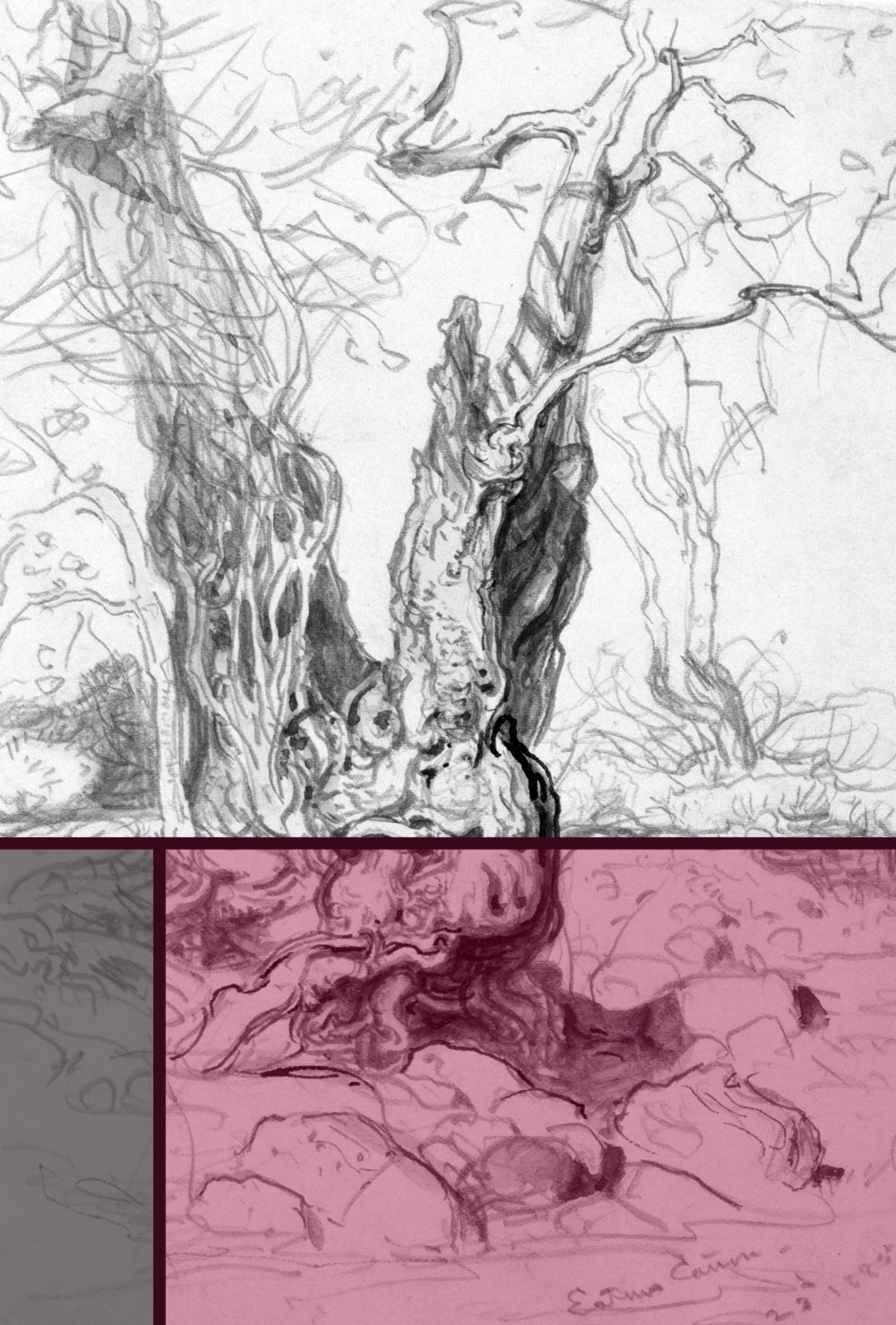12 simple Warm-Up Exercises that will Transform your Drawing Practice
Ever notice that your first sketch of the day is always a bit wonky? In drawing, painting, or any art, a proper warm-up is needed for the best results and improvement.
I used to think warming up was just for athletes. If you want to run a 10k or practice your splits, sure, you’ve got to warm up those muscles first. Otherwise it leads to bad results and injuries.
Not warming up before a drawing session isn’t quite as dramatic, but it can still end in a lot of frustration and a waste of time and paper. Especially if you haven’t been sketching for a while.
Why you should warm up
Doing some simple training exercises before you bring out the fancy paper and start to create your next masterpiece can make all the difference to your work, I promise.
First of all it’ll warm up your body, specifically those parts you need for drawing, like your fingers, wrist, shoulder. Your linework will be much more secure after a few minutes of practice. Secondly, it’ll give your brain some time to change gears, so to speak.
Warming up doesn’t just involve your muscles. Your eyes and brain also need some time to get going.
The thing is, our brain processes information during our everyday life differently than when we’re making art. If we noticed every little detail, texture or convergence line walking around the office it’d would completely overload our system.
For a painting session on the other hand you’ll want to perceive all of these things. You’ll want your brain to basically take off the blinkers and switch into ‘receiver-mode’.
Instead of your brain registering ‘tree’ we want it to see that particular tree, it’s specific shape, colour, branches and foliage.
How long you should warm up
In short: it depends. I’ve know artists that do a few quick exercises for a couple of seconds, as well as others that take their time and practice up to 30 minutes before progressing to their actual work.
Artists who sketch or paint everyday tend to need less time before they’re ready to go, as it were. That’s because their brain is used to switching back and forth between modes, as explained above, so it’s mainly their muscles that need some attention.
Someone who sketches every day will need less time warming up than someone who draws once a week or less.
Another consideration is how you like to work. If you’re a little impatient or you don’t have much time for your art in general, a few minutes of warm-up will suffice.
If you’re planning to spend several hours with your favourite hobby and/or your subject for the day is particularly difficult then I recommend 15 minutes or more of topic-related practice (see below) before you move on to the actual thing.
Just start off with a time frame you think could work for you and evaluate after a couple of tries. I used to think five minutes are quite enough for me, but really, I do my best work after 15 minutes of practice, sometimes more.
What kind of warm-up exercises are best
The best warm-up exercises are those that help you practice your muscles and your brain at the same time. They should be useful but not too difficult or complex.
A good practice for an artist will involve a succession of short, easy exercises that are done over and over for however much time one has set aside for it.
Just as musicians will practice their chords, you might want to start with the smaller elements of every drawing, such as your lines, curves and shading.
If you’re out and about doing some architectural sketches, anything to do with boxes and perspective is of course a good choice. If you’re doing figure drawings your S-Shapes (see below) are a good call.
It’s great if you have a collection of exercises and can select them in line with what you’re planning to draw or paint later.
Of course you can also just draw whatever you see around you and accept that the first couple of sketches of the day are going straight into the bin. But it takes a lot of self-confidence not to get frustrated by bad sketches, even if you technically know they are not meant for keeping.
What about muscle memory?
As I’ve mentioned, artists that work every day tend to need less time warming up than their less regular colleagues, due to their brain being more used to thinking (and thus seeing) like an artist.
But it also has to do with muscle memory, which, according to the Cambridge Dictionary, is the “ability to move a part of your body without thinking about it, learned by repeating the movement many times”. It’s your best friend in many a daily task.
However, muscle memory can take an obscene number of repetitions to build up. Many tutors I’ve had over the years were quite insistent that practising certain shapes and techniques over and over again hundreds of times is absolutely crucial to improve your art. And no doubt they were right.
Ideally, you’d be practising your exercises not just to warm up, but separately, as a training in its own right.
For the super busy people amongst you I’ve got a fabulous 15-Minutes-a-Day Drawing Exercise Routine, too.
Most of the below exercises work just as well with a pencil, pen, crayon or brush, so it doesn’t matter if your art of choice is drawing or painting. Either benefits from a good warm-up.
As always, make sure you work from your shoulder, not your wrist or fingers.
Exercise 1: Lines
The first order of business for any good warm-up practice is usually lines. You’ll be surprised how wonky they can be for the first few minutes.
Draw your lines towards you and away from you, from left to right and vice versa. Try different angles, too, since some are much harder to do than others.
You can try to draw a succession of parallel lines all the same distance from each other. Alternatively you can also make some lines intentionally squiggly (a popular drawing style these days for urban sketching).
Exercise 2: Swirls and Loops
I love doing this exercise, it’s ever so much fun. While this isn’t necessarily a shape you’ll come across in many of your drawings, doing a few simple swirls and loops is great for physically warming up that stiff shoulder of yours.
Yes, you can turn them into snails after.
Exercise 3: Squares and Rectangles
If you like drawing architecture, or really anything man-made, chances are you’ll come across a lot of parallel lines. So we’ll need to practice that.
Draw them fast, but try to keep the opposite lines as parallel as possible.
Exercise 4: Circles
It’s basically impossible to draw a perfect circle without additional tools, but that doesn’t mean we can’t try.
Draw them big and small, clockwise and counterclockwise. As you practice this, day after day, see if you can avoid the little overlap where you start/end the circle as it always makes it look a bit unclean.
By the way, to save paper you can totally draw over the same circles again and again.
Exercise 5: Ellipses
You’d be surprised with how many ellipses we’re dealing on a daily basis, even if we don’t always explicitly notice them.
Glasses, bottles, lamp shades, archways, anything that is a circle if viewed from straight on will turn into an ellipse if viewed from an angle. And let me tell you, those things are super difficult to draw.
You can sketch them very narrow or almost circular and in the beginning you can use centre lines to help you get the shape symmetrical.
A great example where a lot of practice is needed but you will get a lot of use out of it when it’s done.
Exercise 6: S-Shapes
An exercise I do especially before every figure drawing session. Lots of S-type shapes there, such as the waist of a woman or the line from the shoulder to the elbow. But you’ll also see it in other things, such as rivers, jugs or many decorative elements of old buildings.
Obviously they’re rarely perfect S-shapes but they’re close enough that a little practice of said letter, small and large, narrow and open, horizontal or angled, will loosen up your wrist and shoulder and make for much more fluent and interesting sketches.
Exercise 7: Pencil Pressure
The best part about using a pencil for drawing is that you can adapt pressure and angle to incorporate different levels of darkness as well as crisp or fussy lines, all in one sketch.
But if you haven’t drawn for a while, you’re likely to use the pencil like you’re using a pen for writing. With way too much and always the same pressure, which can result in flat, boring sketches.
Playing around a bit with your pressure and handling during the warm-up will do wonders for your artistic style later.
Exercise 8: Cubes (2-point)
You know how it’s helpful for your art to imagine things as geometric shapes? In order to make full use of that idea it’s great if you can draw cubes in 2-point perspective, from any angle.
Yes, that’s very difficult for a beginner and you might have to read up on the technicalities beforehand. But if you ever want to draw from your imagination, or indeed, excel at drawing what you see, it’s also a crucial skill that’s best practised early on. Like now.
Don’t worry if you don’t get it right in the beginning. Your cubes will likely look slightly distorted for a while until you gain enough skill and experience to get the angles just right. And that’s fine, that’s what these exercises are for.
Exercise 9: Spheres
Spheres with crossing lines (to simulate depth) are bit more advanced than your 2-dimensional circles but still very doable even for beginners. Especially if you know the trick:
1. Draw a circle
2. Draw a cross inside the circle, dividing it into 4 equal parts. Keep the lines very light. The angle of the cross doesn’t matter
3. Draw a dot anywhere within one of the four divisions you’ve created
4. Draw an ellipse through the dot that’s symmetrical on both sides of one of the lines of the cross
5. Draw another ellipse through the same dot that’s symmetrical on both sides of the other line
It might sound super complicated just now but give it a go and you’ll see the principle is actually quite simple. In the end it’ll look just like a ball with two elastic bands wrapped around it.
Once you’ve practised this a few times you’ll find that you don’t actually have to draw the lines or dots, you can just imagine them and still get the spheres right.
Top tip: Thick, dark lines seem to come toward us while thin, light lines recede. You can “move” part of your sphere to the front if you darken the half-ellipses that are going through the dot, as well as the area of the circle near it.
Exercise 10: Cylinders
Guess what? More ellipses are needed here. I know, right? They’re everywhere.
Cylinders in one form or another can be observed in our everyday life as glasses, pipes, arms, tree branches, so they’re a worthwhile warm-up before almost any drawing session and very useful as a standalone practice.
Imagine you’re drawing a tin can of some sort, from various different angles. You can stick to a “simple” 2-point perspective or you can spice things up and go 3-point with some nice foreshortening (if the can was a long pipe for example).
Remember, it’s perfectly fine to draw centre lines for a little additional help.
Exercise 11: Cutting Cylinders
Drawing shapes with pieces ‘cut out’ is a difficult exercise at first but it’s so very beneficial.
I promise this super difficult looking exercise will only be tricky for a little bit, until you’ve understood the principle. After that it’s super easy and very beneficial indeed. Especially if your goal is to draw from imagination one day.
When you practice your cylinders imagine what it would look like if you were to cut out a corner of it, then try to draw it that way. Have the cut-outs big or small, front or back.
If you have trouble with this, try to think of the cylinder as being built of many separate pieces. I find that helps enormously in being able to “take a piece out”, a bit like playing Jenga. Then use a variety of ellipses to work out the angles and curves.
Exercise 12: Copying
Making up shapes and copying them is great practice.
Drawing what you see takes a good eye and a lot of accuracy. This exercise will help you with that.
Scribble a free shape on paper, as simple or complicated as you like. Then try to reproduce that shape. You can copy it exactly as you see it, or you can aim for it mirror-inverted for extra difficulty.
For more drawing practice pop by my exercise section.
Did you enjoy this article or feel like you have anything else to add? Feel free to leave me a comment below!
If you like this post, please share it, so others may like it too!









